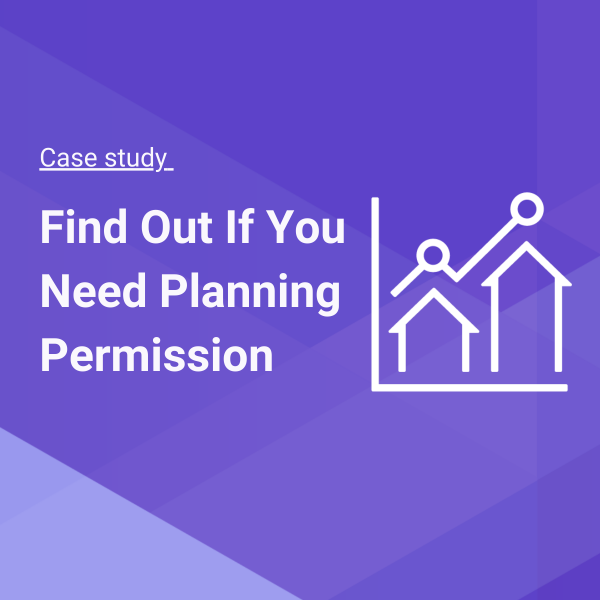Project Journey
In April 2023, Gateshead Council joined the Open Digital Planning (ODP) community as part of the Ministry of Housing, Communities and Local Government (MHCLG) Digital Planning Programme Funding.
Their journey to launching the FOIYNPP service started with updating four critical datasets. To achieve this, they used part of their funding to hire a Newcastle University graduate with GIS skills. From October 2023 to January 2024, the team extracted, updated, and cleansed the datasets using Esri Arc GIS. These cleansed datasets were then uploaded to MHCLG’s planning data platform via the council’s new open data platform.
With the data in place, the team gained access to PlanX, the content management system developed by ODP partners, and initiated user testing. They verified the tool’s accuracy by randomising fringe addresses at constraint boundaries. Subsequently, the council’s Digital Team collaborated to update the webpage, providing clear and accessible information to guide users, predominantly non-planners, toward the service.
A soft launch took place on 20 May 2024, due to the UK General Election. Despite being unable to promote the service during this period there was strong traffic of around 45 – 50 users per week. Formal communications with citizens followed from 24 July 2024, leveraging social media platforms like Facebook, TikTok, X and LinkedIn. Additionally, they engaged with subscribers of the council’s e-newsletter, Gateshead Now, and frequent users of their planning service.
Achievements and Benefits
The data cleansing effort resulted in a constraints map for officers in Esri Arc GIS. Staff use the map to find relevant spatial information required to respond to inquiries and to inform the validation of planning applications. The team plans to publish this map on their website, providing citizens with valuable spatial information about their local area.
Additionally, the project accelerated the implementation of Agile Applications’ AI Validator Tool, aimed at improving the efficiency of the validation process for householder planning applications. Obtaining the spatial information required to get this tool to work would have been a significant challenge for the team. However, the additional capacity created by the Digital Planning Programme Funding and the data cleansing of their four datasets accelerated the availability of the spatial information required for launching the AI Validator tool for householder planning application types.
Objectives and Challenges
The team's primary objective for FOIYNPP is to provide a gateway to complementary services, enabling citizens to self-serve and check if they need planning permission. The project aims to integrate services in PlanX, offering design guidance to direct users to relevant and concise advice on designing a suitable householder development application. It also aims to embed validation checklists that will allow users to know what they need to submit for a valid planning application.
The most significant challenge was the data cleansing phase, which, despite its difficulty, proved to be the most rewarding aspect of the project. Internal challenges related to procurement and legal resources were mitigated through close collaboration with the council’s procurement team, who are now discussing the contract with Idox to develop an integration between Idox Uniform and PlanX.
User Research and Feedback
User research involved engaging with end users and testing the service with pre-application inquiries. Insights gained from ODP predecessors, who have worked on the product side of PlanX for some time and trailblazed and problem-solved to get the FOIYNPP to be the excellent tool that it is, were instrumental in refining the service.
The team plans to host a launch event with planning agents and service users to gather feedback and foster a network of stakeholders for future developments. The aim is to gain valuable input from these stakeholders that can be used when looking for feedback before launching new PlanX services.
Initial Response
The response from officers and citizens has been overwhelmingly positive. Officers, particularly the Gatehead Council Information Officer who looks after councillor and public enquiries, appreciate the tool’s ability to help citizens self-serve. Citizens have also responded favourably, with many using the tool before making formal pre-application inquiries. Additionally, the tool has also helped non-technical support staff within the service to help citizens find more relevant information for their projects.
Collaborative efforts with Barnet Council and the MHCLG Planning Software team have resulted in a new Power BI dashboard, enabling the team to monitor application numbers and invalidation rates.
Metrics and KPIs
Success metrics include monitoring the number of ‘Do I need planning permission?’ pre-application inquiries versus ‘Lawful Development Certificate’ applications. The team is also tracking the time spent responding to inquiries and the number and type of permitted development inquiries received via email and phone. Additionally, they are monitoring their validation process to highlight the impact that PlanX is having.
Future Plans
Next steps involve launching the ‘Report a Breach’ PlanX service in the Autumn of 2024 and developing a service for Householder Design Guidance. This is the first time the team will create a flow from scratch, where PlanX will remember the constraint information and tailor advice based on the answers given by the user.
Additionally, the team plans to incorporate a validation checklist created by Newcastle City Council, tailored to local requirements. They will also explore additional flows within PlanX to address various service areas, including Climate Change, Compliance, and Planning.
Conclusion
The launch of the FOIYNPP service at Gateshead Council exemplifies the effective use of digital tools and collaborative efforts to enhance service delivery. By addressing challenges, leveraging user research, and setting clear objectives, the team has successfully created a valuable tool for citizens and officers alike, paving the way for further digital innovations in planning services.
Want to know more?
Our community of Local Planning Authorities work together to design new digital planning products that improve the experience of the people using them.
